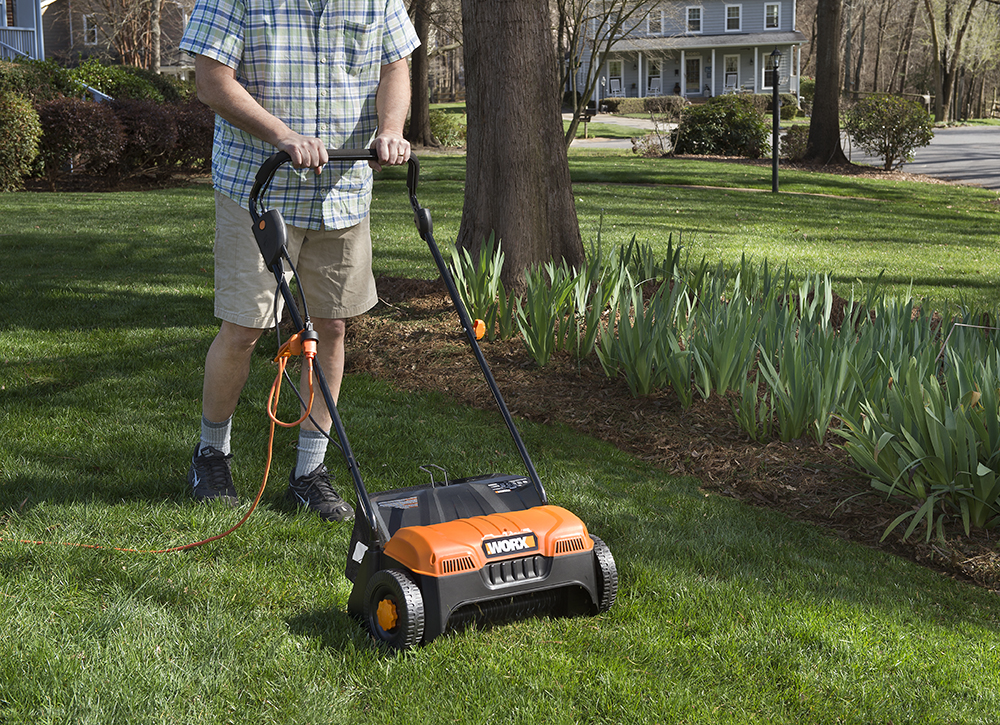Managing Thatch for a Healthier Lawn
By Kim Toscano
Proper lawn care includes regular irrigation and fertility management, as well as mowing to the appropriate height. For many lawns, thatch management is also part of the maintenance checklist. Even well-cared-for lawns can develop thick thatch layers that impede water movement and harbor pests. Occasional maintenance to remove thatch, called dethatching, will ensure your lawn stays healthy and green.
What is Thatch?
You’ve probably noticed thatch before without realizing what it is. I commonly see the thatch layer exposed along sidewalks that have recently been edged. Thatch is the layer of non-decayed organic material between the soil surface and the green grass blades, comprised mostly of dead rhizomes, stolons, stems, and roots. If not managed it can become very thick over time.
The rate of thatch build-up in lawns varies between grass species and under different growing conditions. Over-fertilization and heavy irrigation encourage rapid growth that cannot break down quickly. Heavy, compacted soils and poor microorganism activity slow the rate of decomposition. Contrary to popular belief, leaving grass clippings on the lawn after mowing does not lead to thatch buildup when mowing is performed at the proper frequency and height. However, if mowing is done infrequently long clippings are left behind which can contribute to thatch.
Problems Caused by Excess Thatch
When the thatch layer becomes too thick it provides suitable habitat for disease-causing fungi and insect pests. The thick organic layer also creates a more humid environment that further favors disease. As thatch builds up, roots of new grass plants grow within the thatch layer rather than the soil, which makes lawns more susceptible to drought and heat. These problems are exacerbated as dense thatch can hinder movement of air, water, fertilizer, and pest control materials into the soil, interfering with corrective measures.
How Thick is Too Thick?
Lawns with excessive thatch layers often feel spongy when you walk across them. As a rule of thumb, thatch layers in warm season grasses including zoysia, bermuda, and buffalograss should not exceed ½ inch thick. Most zoysia and bermudagrass varieties grow vigorously and benefit from annual dethatching. Buffalograss and centipede grass seldom develop thick thatch layers.
For cool season grasses, such as fescue, bluegrass, and ryegrass, the thatch layer should not exceed 1/3 inch thick. These grasses do not commonly form thick thatch layers and seldom require dethatching.
How to Manage Thatch
Dethatching requires specialized mowing equipment including dethatching machines and vertical mowers which can often be rented locally. WORX recently introduced a new Electric Dethatcher so you don’t have to rent expensive equipment year after year. The 12 amp dethatcher has a 14-inch cutting width and a 3-position depth-adjustment to accommodate any lawn. A handy collection bag captures the shoots, stems, and roots after trimming so there is no mess to rake up. And the handle folds down for compact storage.
When to Dethatch the Lawn
Time dethatching just prior to the flush of new growth. This encourages lawns to recover quickly from this aggressive management practice. Dethatch warm season grasses mid- to late-spring. When necessary, cool season grasses should be dethatched in early fall. Note that cool season grasses may require reseeding after dethatching. You can also dethatch bluegrass in early spring after the foliage has begun to turn green.
Following proper irrigation, fertilization, and mowing practices will go a long way toward minimizing thatch built up and reducing the frequency you need to dethatch the lawn.

